Memorial to the Murdered Jews of Europe
- Address: Cora-Berliner-Straße 1
- Tags:
 What to see Berlin,
Berlin,
Germany
What to see Berlin,
Berlin,
Germany
Spinetingling monument in Berlin
We found ourselves surrounded by shadow, frozen before the uneven topography of the place, and I saw myself surrounded, locked in, while the desperation, the fear and the emotion I felt when leaving froze me to the spot.
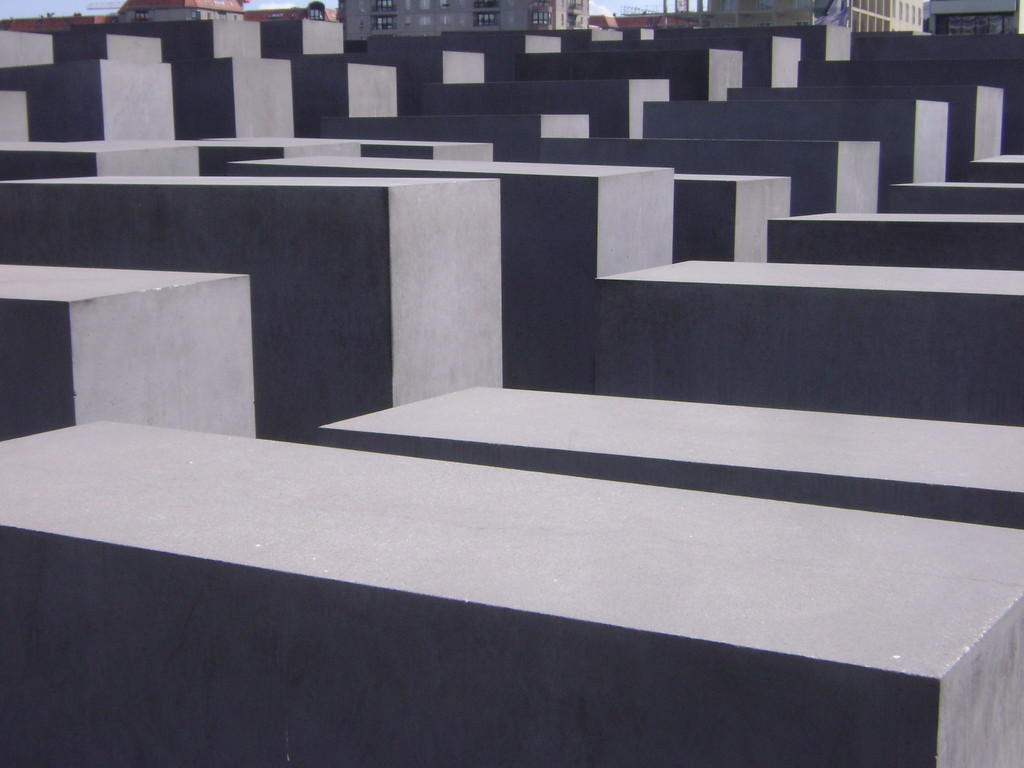
The city of Berlin, capital of Germany, is like the child of a murder. It sounds terrible and drastic to describe it like that, but it could definitely been seen in this way. Berlin as we know it today was born from a dark past, and its mentality and community feeling are now illuminated by a new, more tolerant future.
The city doesn't shy away from its past, it doesn't deny its parentage, but instead accepts it and repents of it. It is full of monuments to those who fell during its history of terror, commemorating their bravery, remembering them in a song of peace and deep repentance in an act of self-flagellation.
One of the most contemporary monuments is the Monument to the Murdered Jews of Europe, or as I know it, the Jewish Memorial, located a few streets away from the left hand side of the Brandenburg Gate.
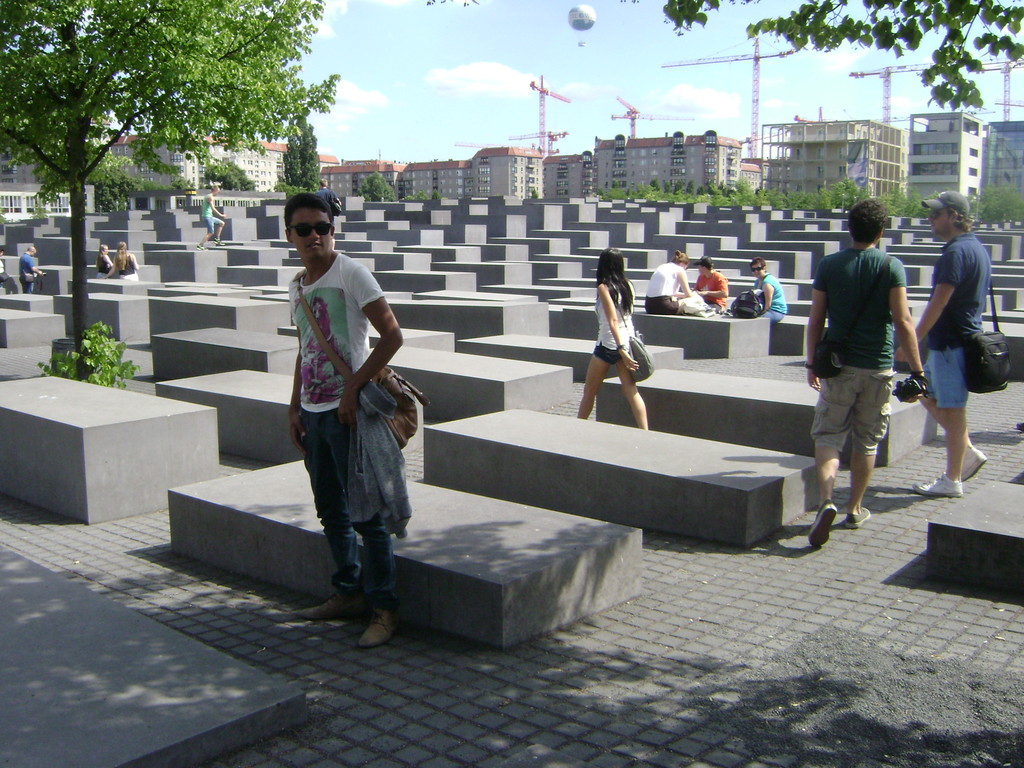
The monument is open to the public and around two football pitches in size, featuring thousands of small grey walls ranging from 50cm to over 4m in size arranged to create the optical illusion that they are all of a similar size.
The project was carried out by an American architect named Peter Eisenman, who I applaud for his concept and sensorial imaginative capacity in general, but who has been criticised by the architecture world since ten years after its installation, the blocks have begun to show signs of weathering and decay due to an incorrect calculation of his regarding Berlin's cold climate.
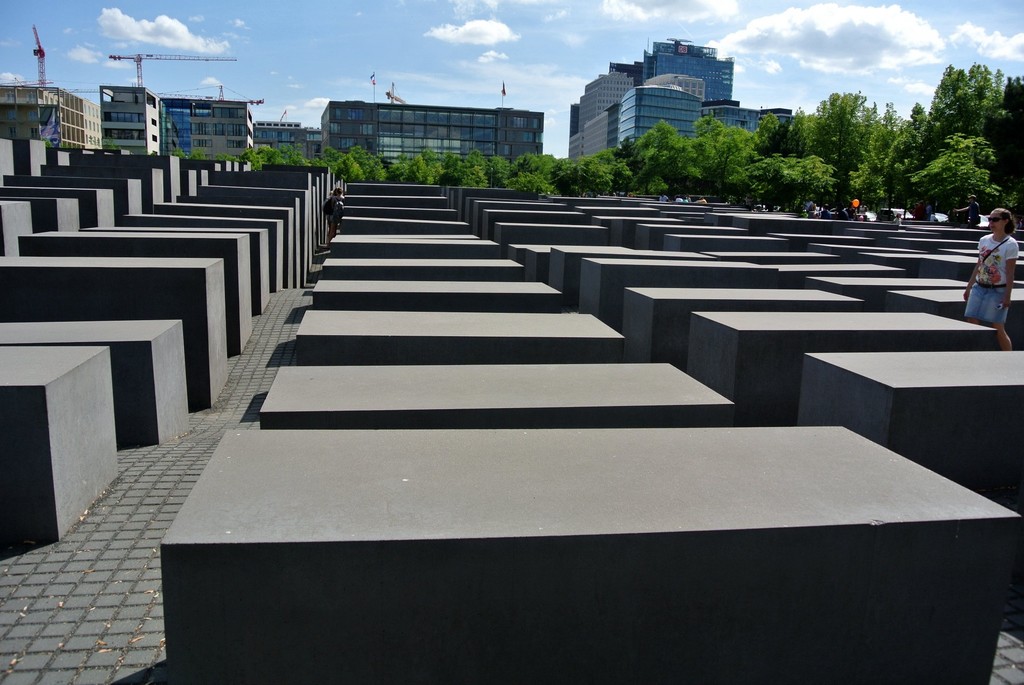
I personally wouldn't give the architect the whole blame, since there are lots of people who intervene in the construction of a work such as this. I do however understand the worry and indignation of the Germans, who are now fearing the loss of one of the most sacred monuments in their country.
Sacred? I feel we can use this adjective to describe the monument, since these pieces of concrete represent a cemetery commemorating the millions who died at the hands of cruelty and injustice.
In summary, the truth is that when I paid my obligatory and emotional visit to the monument, the blocks were in good condition and I was pleased to have experienced the sensations it gives you first hand. It makes my skin crawl just thinking about the anxiety I felt when I was there.

The monument's topography is amazing: the ground rises and falls in waves which require you to walk up and down hill among the slabs almost without realising it. The deeper you penetrate into the maze, the higher the slabs rise around you, blocking out the light, until you find yourself in a series of seemingly infinite passageways of cold concrete.
Photo gallery
Content available in other languages
- Español: Monumento sensorial en Berlín
- Italiano: Monumento sensoriale a Berlino
- Français: Monument sensoriel à Berlin
An experience of reflection, the best way to get to know Germany.
Memorial to the Murdered Jews of Europe: A very different monument
This is one of the monuments in Berlin that you can't miss out on. Sadly it's not a memorial that you should visit because of its charming architecture or because it's going to look good in your Instagram photos. This is one of the places that is visited for its historical importance and also for people to reflect on life, or at least that's how I see it.
I got know know the Jewish Holocaust memorial thanks to a free tour which I took in Berlin, it's called "Free Walking Tours". I would recommend the "free" tours because they are lead by students or young workers who are well informed and know the city very well. At the end of the tour, although it's free, they always ask you for some cooperation by evaluating how well you think they've done. However, at the end of the tour, they really deserve their 5€ because the tours are worthwhile and you will save a lot of money compares to if you went with a private tour. The atmosphere on the tours is incredible and you get to know a lot of "backpackers" who end up becoming your friends by the end of the tour. You can look on the webpage for the tours as they happen on certain days and there are different routes, and you can also choose what language you do the tour in.
The webpage is: Free Walking Tours
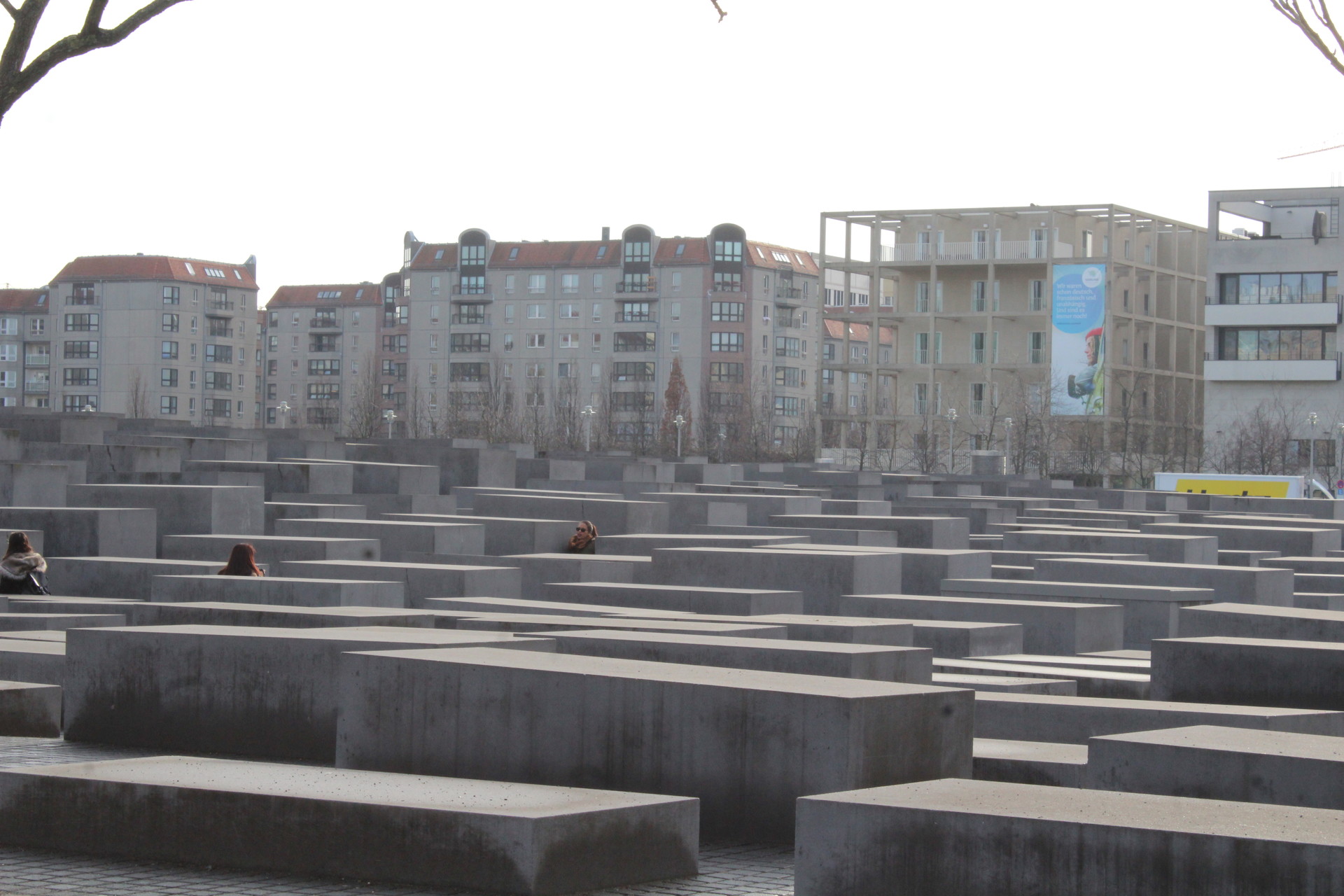
A view of the memorial, which is easy to get lost in amongst all the concrete blocks. This photo was taken in winter, when it snows it looks so pretty and really leaves an impact.
The controversy over whether to install the memorial or not
This memorial in Berlin was constructed to commemorate the victims of the Holocaust. Originally it was designed by Peter Eisenman and Buro Happold. Initially, there was a lot of controversy over its construction because some Germans thought that building the memorial meant that part of German history still couldn't be overcame. Others say that the Holocaust was a terrible mistake of the past generations and asked why the new generations should have to carry the guilt too from years before which wasn't their responsibility, and apart from that, they don't think it's fair to spend the 25 million euros it cost to build when it was something that had happened years ago. Despite all of that, construction started in April 2003 and it was completed in December 2004. The location of the memorial is unmissable for any tourist seeing as one of the most famous attractions in Berlin is the Brandenburg Gate which is only a street away from the memorial.
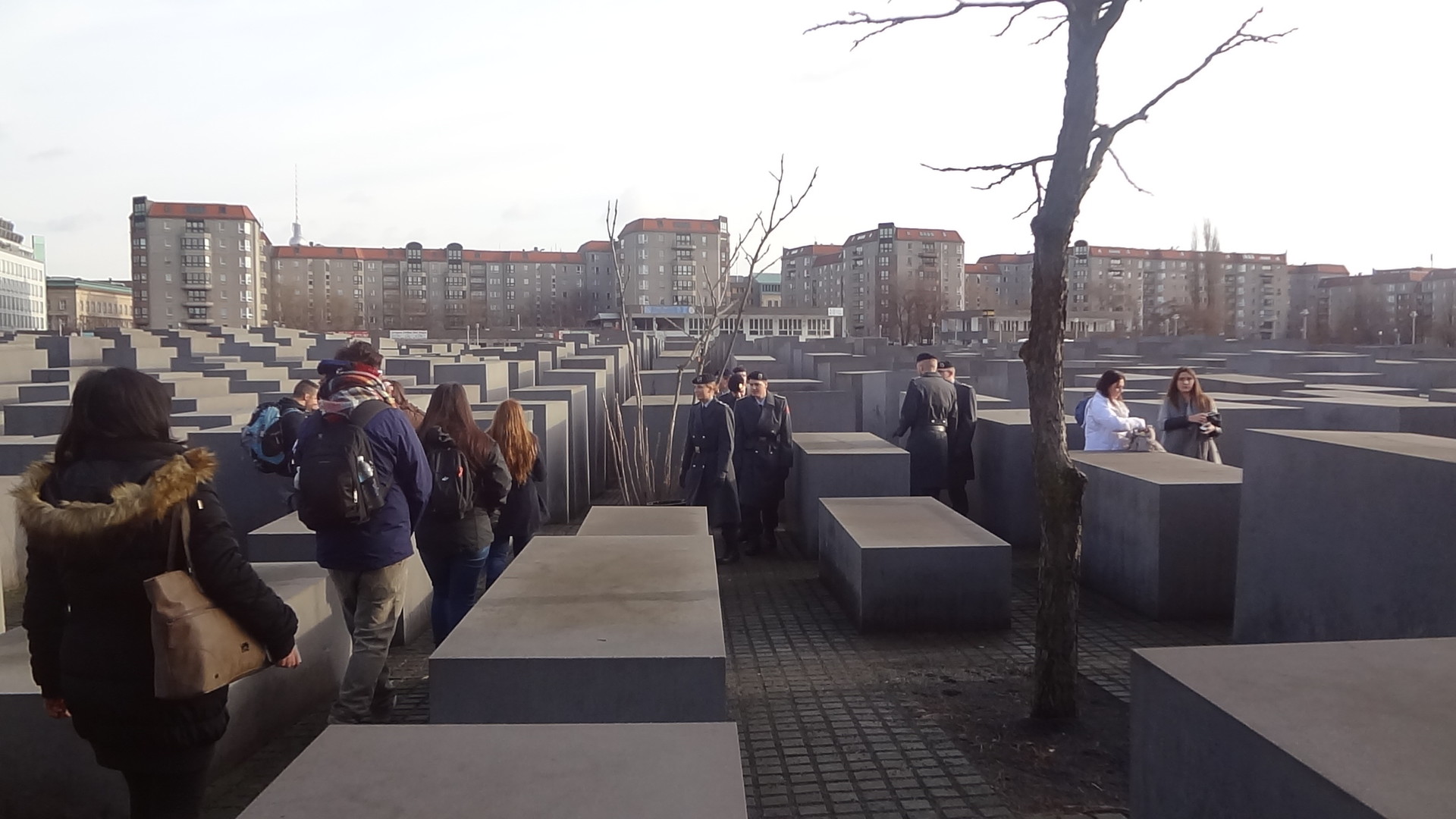
Here we found everyone surrounding one of the concrete blocks, listening attentively to the guide's explication. An experience that gives you goose bumps. You can also see the guards with their grey uniforms who are in charge of making sure tourists behave themselves around the memorial and that no one vandalises the monument.
An open meaning
Despite a lot of people opposing its construction, it was built anyway. It's compiled of 2711 concrete blocks which are in an area of 19, 000 squared metres. Some of the blocks or stelas vary in width and height as they are positioned in said camp with the blocks on the outside measuring as little as 20cm in height whether as other measure up to almost 5 metres (those ones are found more towards the centre of the monument). These blocks are found arranged into 54 rows and 87 columns, to be exact. But how did they decide the exact number of columns? If you look hard enough, you'll realise that the number 2711 is a prime number. Prime numbers are only divisible with themselves of one and nothing else. The designers wanted to leave the meaning of the monument open to interpretation, that is to say, they wanted each person to see what they felt in their hearts and interpret it however they wanted.
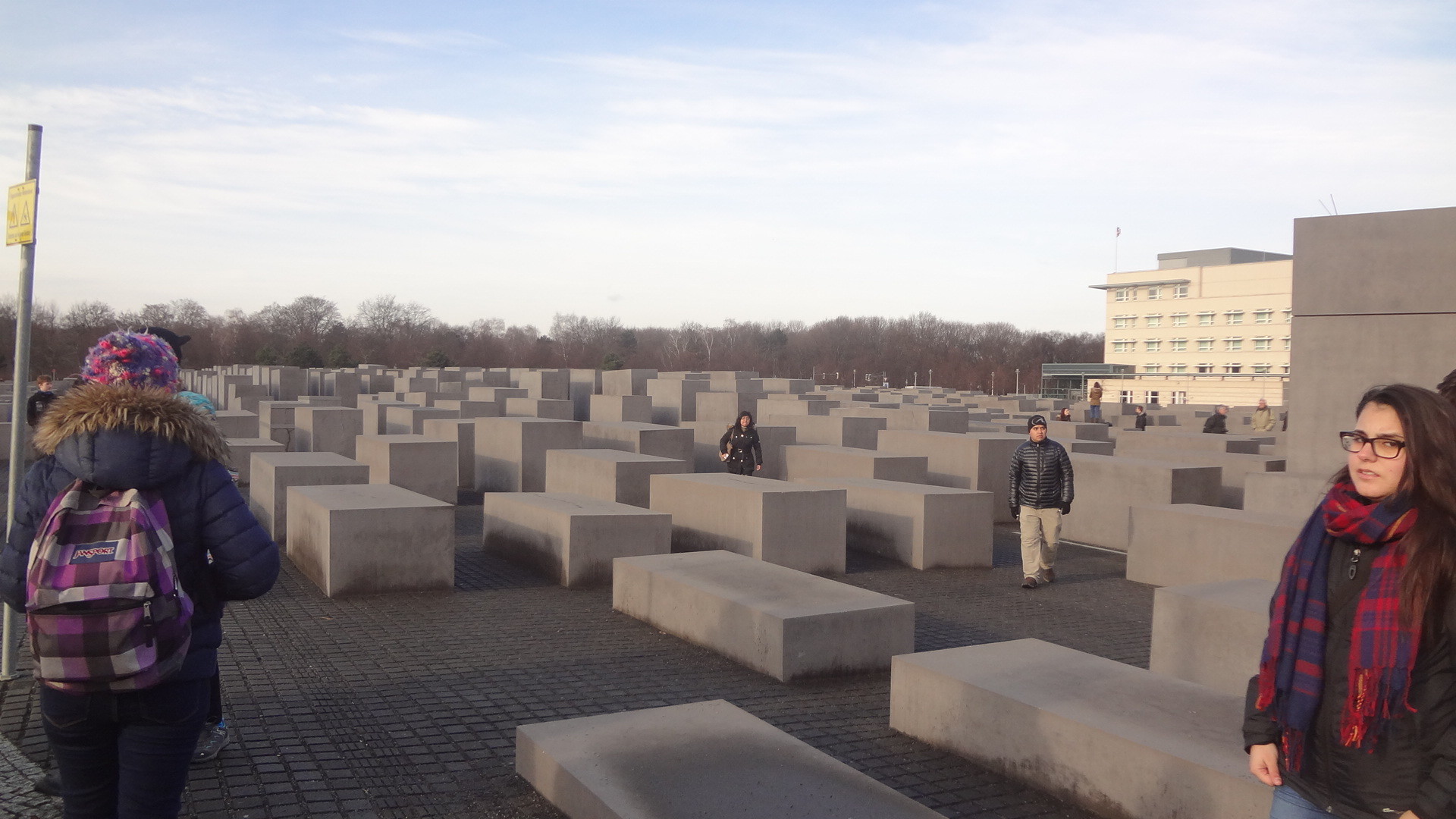
It seems to me that the concrete blocks on the corners look like tombs, as if they were the tombs of the millions of families affected. Some to a greater extent and some to a lesser degree, represented by the height. This is how I perceive it, I would love to read your perception if you want to leave a message on my profile.
It could just be that the number of blocks is irrelevant, but at least I think there is a very strong interpretation. It's to say that we are all united as one or we're completely alone and apart. As a lot of us know there are still, sadly, some neo-nazi groups which exist even today, these kinds of groups were the ones responsable for some of the acts of vandalism, especially the graffiti. It's because of this that each one of the blocks is protected against graffiti and there are some security guards, thanks to some incidents in the past.
The Underground Museum
In the back part of the monument, you can go into a type of underground museum which is free and open to the public. In there, you will find the names of the more than three million victims of the Holocaust.
After visiting the memorial, don't forget to complement your visit by attending the underground museum. It's a recommendable experience for all tourists who want to soak up the history but who at the same time cannot or do not want to pay to go to Auschwitz or the Sachsenhausen concentration camp. It's important to mention that each person reacts differently with this kind of exposition which pull on your heartstrings. There are people that can not nor do not want to go to Auschwitz, and at the same time as arriving there, they want to back out because it's so emotional, so the good thing to do is visit the memorial museum which is easy to exit and go back up to the city if you can't bear it, apart from that, the experience isn't too much to handle compared to the concentration camps which I mentioned before.
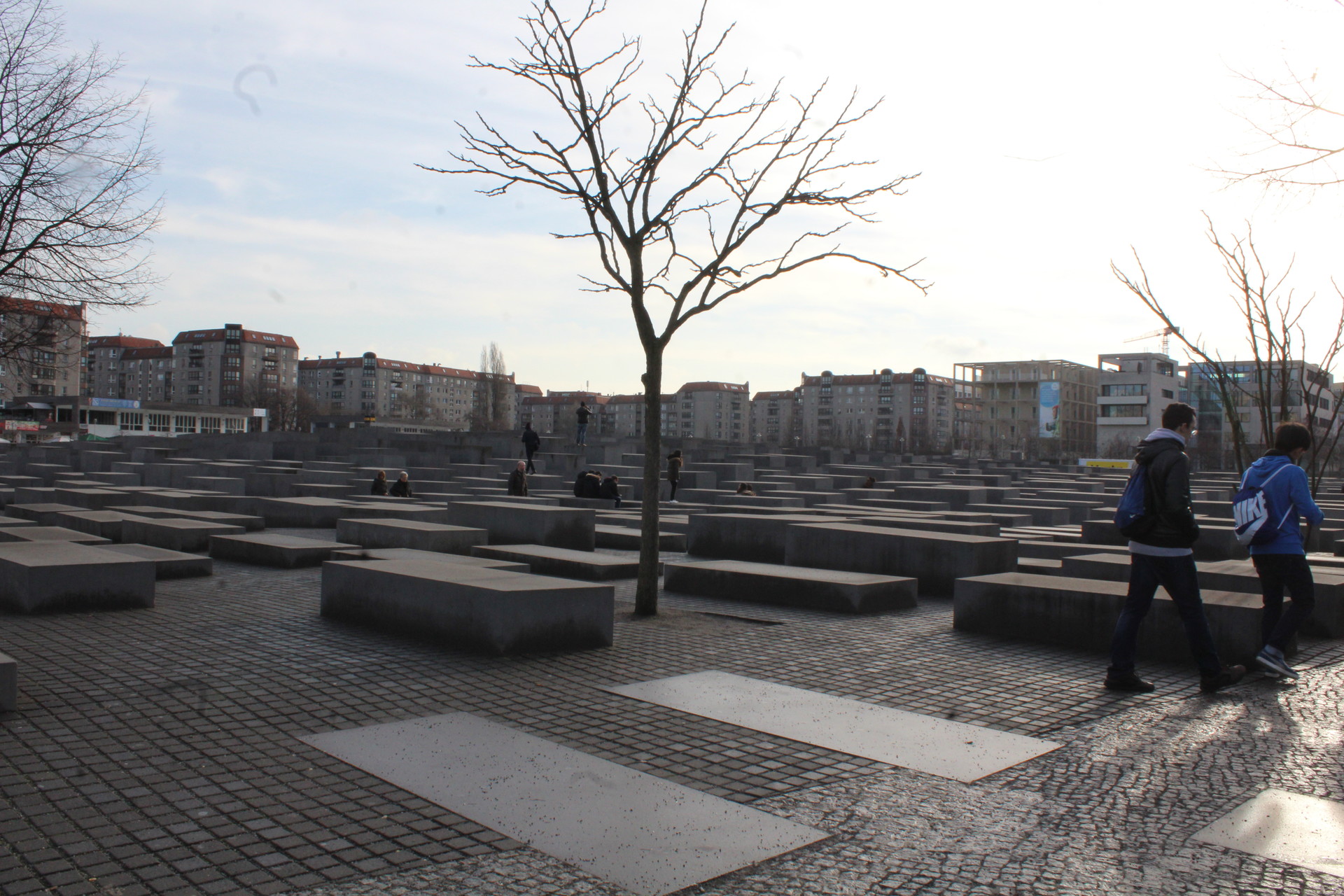
The Jewish Holocaust Memorial receives hundreds of visitors everyday. At the time this photo was taken, it was low season yet you can still see a considerable amount of people during a time when there's almost no visitors.
In the museum, you should leave all your bags and shopping in the lockers which are free. It's concentrated on the stories of 6 people who died in Auschwitz, it's more about their last days, from the farewell cards they wrote to their families (a lot of whom were already dead). It's an incredibly emotional experience, especially reading the card of a 6 year old boy who was explaining to his parents that he knew he was going to die. These kinds of experiences really aren't nice, they make you reflect a lot on history of humanity, it makes you think about if we made the same mistakes and the cost of such an impact which war can have.
The museum really helps everyone to understand what happened, it's fairly based on speaking and includes videos and the original cards which are stuck to the floor with a light which you need to be able to read them. You can feel emotional when you see the videos and get to know about some of the victims, seeing how the conditions that they lived were like, the soldiers involved and what day to day life was like in the concentration camps.
My friend and I were able to read everything in the museum but my cousin and mum decided to just see half the museum then they waited outside for us, because as I said, it's different for everyone and there are people who just simply can't or don't want to hear about what happened. It seems to me that if you have the opportunity to travel and not only to read about it in your history books, it's quite important that you take advantage of the opportunity to inform yourself from the first instance of what Germany is like so many years after the First World War and the Second World War. It's an incomparable experience, an experience that no history course can give you. Lessons outside of the classroom are always better. If you are interested to go into the free museum, get there early because it is open from 8 in the morning but it is shut from 3pm.
The attitudes of tourists which are not acceptable
During my time in the memorial, it annoyed me to see the behaviour of some of the tourists which didn't leave much to the imagination. Talking about the genocide of millions of Jews is not something light-hearted, it's something serious which requires respect. Personally, each one of the concrete blocks is like a grave stone, especially because of the colour and the way they are laid out. I think that being here requires respect and silence to reflect on what happened. It annoyed me to see a lot of tourists with their kids who wanted to entertain themselves in the memorial by jumping from block to block as if they didn't have the slightest bit of respect.
I also saw people who were climbing the blocks and posing, as if to take a selfie. Others usually raise their feet on one block and their torso on another. This memorial is not a monument like the Eiffel Tower, it's not an arch of triumph which you can pose with however you want, you have to have some respect in a memorial which represents millions of murdered Jews, millions of destroyed families and a part of history which more than one person wants to forget.
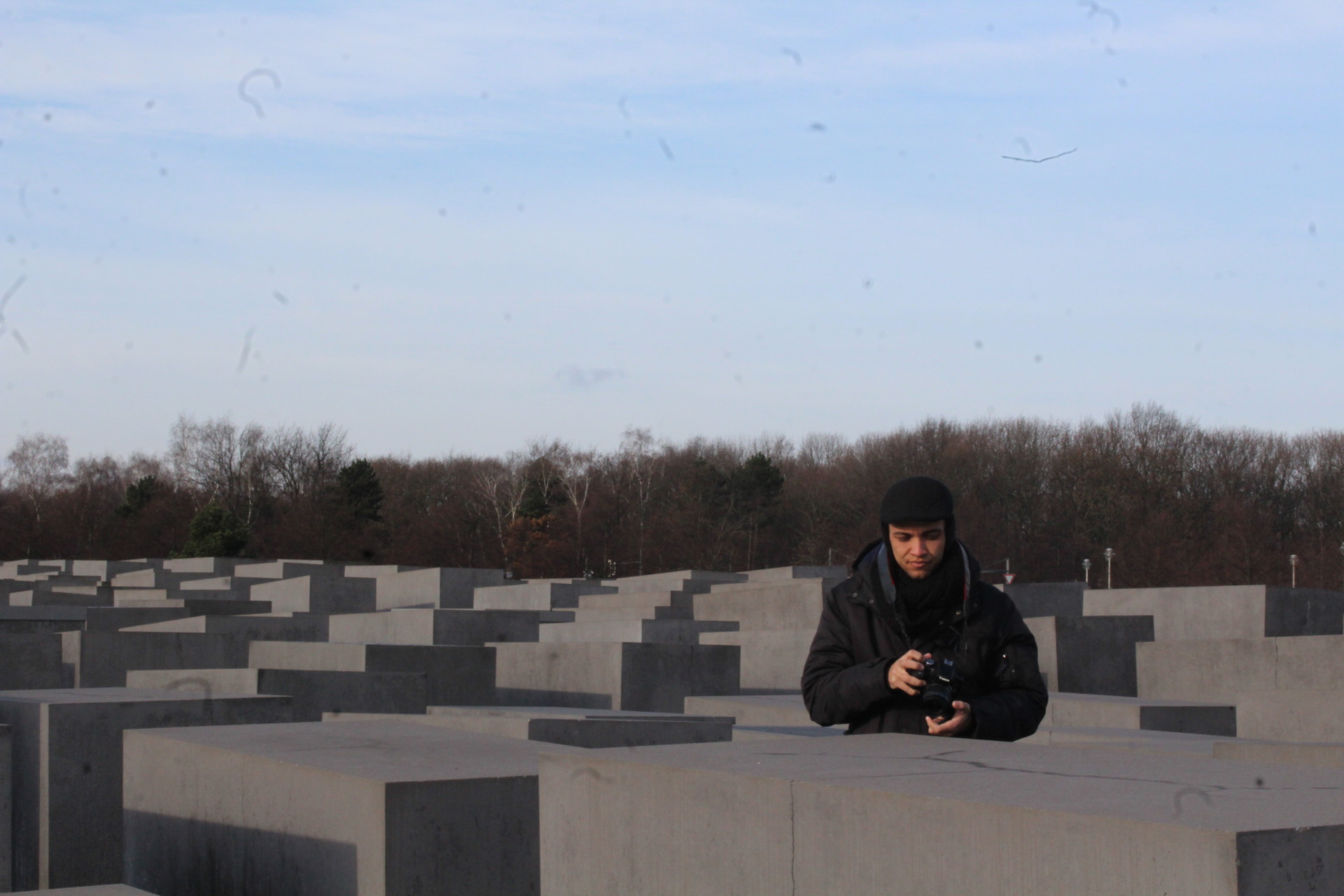
I think it's okay to take photos because at the end of the day, you are a tourist and you want to remember each place that you've been to, but you always have to be respectful. An example of my friend Luiz from Brazil, who was with me on the trip and whom I captured treating the monument how it should be.
Some peculiar things I learnt during this trip
The spoils of the Second World War and the Holocaust are still felt to this date, where there are occasions (although it's not very commun) where people find bombs underground which have not yet exploded and could do so at any moment. These types of bomb are called "sleeping bombs", they weigh approximately half a ton - can you imagine that? Each time something like this happens, the police have to be called to evacuate the neighbourhood and stop the traffic for some hours where they ensure that the bomb is actually disabled. A lot of people say that there are still approximately 3000 bombs from the war which haven't yet exploded, which is actually quite a small number taking into account that Berlin alone was bombed by half a million tonnes of bombs.
The sleeping bombs are something that the government still worries about today because some of them can detonate spontaneously, as is the case of one of them which exploded next to a school in 1983.
Another thing that impressed me is that only in 2015 did the Republic of Germany finish paying France back for the economic damage done during the Second World War. There were agreements that remained as part of a pact in the famous Treaty of Versailles, signed in the palace of Versailles in France. As you can notice, the tourism that you can do in Berlin is more historical than anything, because a war as important as the Second World War and the Jewish Holocaust still remain themes relating to the German town nowadays, whether they like it or not.
Photo gallery
Content available in other languages
Rate and comment about this place!
Do you know Memorial to the Murdered Jews of Europe? Share your opinion about this place.


























